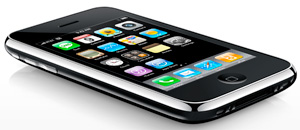Introduction
USB Flash drives are known by many names including thumb
drives, jump drives, keychain drives, and USB memory keys. They have very
quickly become the portable storage media of choice for the many people,
replacing floppy disks, Zip disks, and even CD-RW disks to some extent. USB
flash drives are especially useful for students or people who regularly use
more than one computer and need a dependable way to transfer data back and
forth. Another advantage is that most USB flash drives will work with both Windows and Mac systems. (PCs still running Windows 98 need to install separate drivers. Macs
running anything older than OS 9 need drivers too.)
Growing popularity, shrinking price
Flash drive prices have dropped sharply over the past year.
Even high capacity 2 gigabyte drives can now be found for as little as $125. A
little over a year ago the same 2 GB drive would cost around $700! But for most
people, a 512 megabyte (0.5 GB) flash drive is more than adequate. These currently
cost between $30 and $40, and can hold almost as much as a CD-R disc, five Zip-100
disks, or 350 floppy disks! The sudden popularity of USB flash drives explains
why many desktop computers no longer come with floppy disk drives. Instead,
many desktops now sport extra USB ports in the front, where flash drives can be
easily plugged in.
What to look for
Several reviews of USB
drives exist, but most are fairly technical and test only a limited number
of flash drives. The main things to consider when selecting a USB flash drive
are storage capacity, read/write speed, physical size, durability, and warranty.
- Storage capacity is easy to recognize, and if money is no object, bigger is always
better. - Read and write speeds determine how long it will take to copy files to
and from a flash drive, yet they are often not listed on the packaging. Without
wading through pages of reviews, the best thing to do is make sure it is a USB
2.0, or hi-speed flash drive. While most flash drives out there are USB 2.0
drives, there are still some slower, first-generation drives on the market. These will be significantly slower. - Small physical size may seem obvious for
something that is supposed to be portable, but another reason to stick with a
thin drive is because most computer USB ports come in pairs, side-by-side. Some
flash drives are so wide they block the USB port next to the one being used. - Durability
is important because a flash drive is bound to be dropped sooner or later. Since
there are no moving parts in flash memory, USB flash drives can take a fair
amount of abuse. Flash drives made of metal may hold up better over time, but
they are often more expensive. - Warranties on USB flash drives range from one year
to lifetime. Because flash memory can go bad or eventually
wear out, a nice, long warranty is a good idea.
With all these considerations in mind, one product that stands out
as a great value is the SanDisk
Cruze Micro with Skins.
